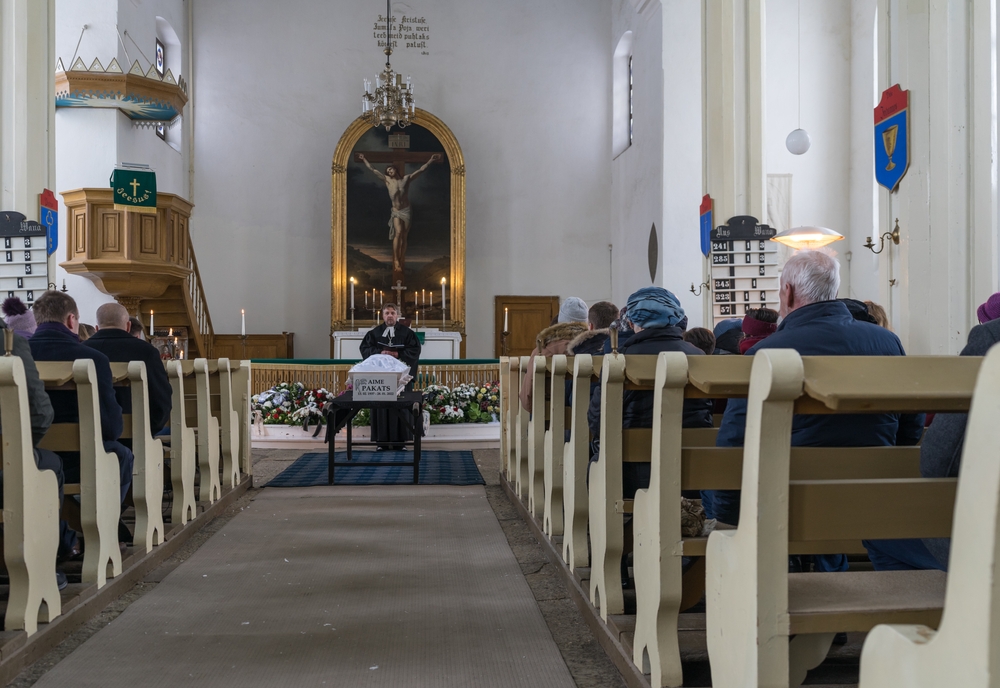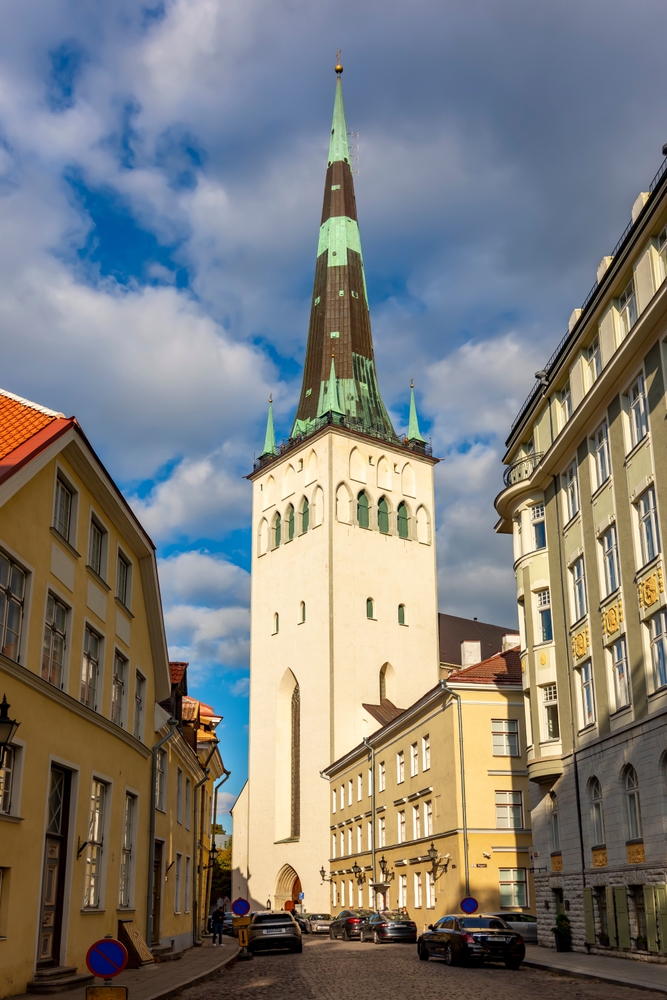Orthodox Christianity
Introduction: Christianity remains the most widespread overall religion in Estonia. The Orthodox Church of Estonia is a Christian denomination that is part of the country's Eastern Orthodox Church. It was established in 1923 and has undergone significant changes due to the country's turbulent history, including periods of Soviet repression and forced assimilation. Orthodox Christians make up about 16 percent of Estonia's population.
Origin: Orthodox Christianity was brought to Estonia by the Eastern Slavic peoples who settled there in the Middle Ages. The first Orthodox churches were built in the 13th and 14th centuries. The Orthodox Church of Estonia was officially established in 1923 after Estonia gained independence from Russia following World War I.
History: The Orthodox Church of Estonia has had a tumultuous history due to the country's location between the East and the West. During World War II, Estonia was occupied by the Soviet Union, and the Orthodox Church was forced to merge with the Russian Orthodox Church. After Estonia regained independence in 1991, the church split from the Russian Orthodox Church and became independent.
Adherents: The majority of adherents to the Orthodox Church of Estonia are ethnic Russians or people of Russian descent. However, there are also many Estonians who are Orthodox Christians. According to the 2011 census, 16 percent of the population identified as Orthodox Christians.
Belief System: The Orthodox Church of Estonia shares the same beliefs as other Eastern Orthodox churches. They believe in the Holy Trinity, the divinity of Jesus Christ, and the importance of the sacraments. The church also places a strong emphasis on the Virgin Mary and the saints.
Practices: Public practices of the Orthodox Church of Estonia include liturgical services, which are performed in the local language and follow a set ritual. Private practices include prayer, fasting, and the reading of scripture. There are also pilgrimages to holy sites within Estonia and other countries.
Rituals, Events, and Celebrations:
- Easter is the most important holiday in the Orthodox Church, and it commemorates the resurrection of Jesus Christ. In Estonia, Orthodox Christians attend church services, exchange greetings, and share a traditional meal with family and friends.
- Christmas celebrates the birth of Jesus Christ and is one of the most important holidays in the Orthodox Church. In Estonia, Orthodox Christians attend church services and share a traditional meal with family and friends.
- Baptism is an important sacrament in the Orthodox Church and symbolizes the washing away of sins and the beginning of a new life in Christ. In Estonia, Orthodox Christians may undergo baptism as infants or adults, and the ceremony typically takes place in a church.
- The Divine Liturgy is the main worship service in the Orthodox Church and involves the celebration of the Eucharist. In Estonia, Orthodox Christians attend the Divine Liturgy on Sundays and other holy days.
- The Feast of the Transfiguration commemorates the event described in the Gospels where Jesus Christ was transfigured before his disciples. In Estonia, Orthodox Christians attend church services and may also participate in processions or other celebrations.
Texts: The Orthodox Church of Estonia uses the same scriptures as other Eastern Orthodox churches, including the Old and New Testaments, the Apocrypha, and the writings of the church fathers. The liturgy is performed in the local language, but the church also uses Church Slavonic for certain parts of the service.
Places of Worship: The Orthodox Church of Estonia has many churches throughout the country, with the most notable being the Alexander Nevsky Cathedral in Tallinn. Many of the churches are built in the traditional Byzantine style and feature intricate iconography and frescoes.
Sacred Places: Sacred places within the Orthodox Church of Estonia include the various churches and monasteries throughout the country. There are also many holy sites in Russia and Greece that are important to Orthodox Christians.
Leadership Structure: The Orthodox Church of Estonia is led by a bishop, who is elected by the Holy Synod of the Orthodox Church of Constantinople. The bishop is responsible for the spiritual leadership of the church, and there are also clergy members who serve in various roles within the church.
Role in Society: The Orthodox Church of Estonia plays an important role in the cultural and religious life of Estonia. While it is a minority religion, it has a long history in the country and is an important symbol.
Evangelical Lutheran
Introduction: The Evangelical Lutheran Church of Estonia is the largest religious denomination in Estonia after the unaffiliated population. It is a part of the broader Lutheran tradition of Christianity, with roots in the Protestant Reformation. Lutherans account for about 8 percent of Estonia's population.
Origin: The Lutheran Church of Estonia has its origins in the Reformation, which reached Estonia in the 1520s. The first Lutheran congregation was established in 1524, and by the end of the 16th century, Lutheranism had become the dominant religion in Estonia.
History: During the Soviet occupation of Estonia, the church was persecuted, and many of its clergy were arrested and executed. After the collapse of the Soviet Union in 1991, the church was able to reestablish itself and became fully independent in 2009.
Adherents: The Evangelical Lutheran Church of Estonia has around 170,000 members, making up 13.6 percent of the population. The majority of its adherents are ethnic Estonians, although it also has a significant number of ethnic Russians.
Belief System: The Lutheran Church of Estonia is part of the broader Lutheran tradition of Christianity, which emphasizes the importance of faith in Jesus Christ as the path to salvation. Lutherans also believe in the authority of the Bible and the importance of sacraments, such as baptism and communion.
Practices: The Lutheran Church of Estonia holds regular Sunday services and observes the liturgical year, which includes Christmas, Easter, and other Christian holidays. The church also provides social services, such as education and healthcare, and operates a number of charitable organizations.
Rituals, Events, and Celebrations:
- Confirmation: This is a rite of passage for young people who have completed their catechism studies. During confirmation, the young person publicly affirms their faith and commits to living a life in accordance with Christian teachings.
- Christmas Eve Service: This is a celebration of the birth of Jesus Christ and is typically held on December 24. The service includes singing hymns, reading the Christmas story from the Bible, and lighting candles to symbolize the light of Christ.
- Easter: This is the most important Christian holiday and celebrates the resurrection of Jesus Christ. The Estonian Lutheran Church holds special services throughout Holy Week, including Maundy Thursday, Good Friday, and Easter Sunday.
- All Souls' Day: This day is dedicated to remembering and praying for the dead. The Estonian Lutheran Church holds special services on this day to honor the memories of those who have passed away.
- Wedding Ceremony: The wedding ceremony is a sacrament in the Estonian Lutheran Church and is a celebration of the union between two people. The ceremony includes prayers, hymns, and the exchange of vows and rings, and is meant to be a reflection of the couple's commitment to each other and to God.
Texts: The Lutheran Church of Estonia considers the Bible to be the authoritative text for its teachings and practices. The church also recognizes the Lutheran confessions, including the Augsburg Confession and the Book of Concord.
Places of Worship: The Lutheran Church of Estonia has more than 170 churches and chapels throughout the country. The most notable of these is the St. Mary's Cathedral in Tallinn, which dates back to the 13th century.
Sacred Places: In addition to St. Mary's Cathedral, the Lutheran Church of Estonia has many other sacred places, including graveyards, memorials, and other historic sites associated with the church.
Leadership Structure: The Lutheran Church of Estonia is led by a bishop, who is elected by the church's synod. The bishop is responsible for overseeing the church's operations and appointing pastors and other clergy.
Role in Society: The Lutheran Church of Estonia plays an important role in the country's culture and society, providing spiritual guidance and social services to its members and the broader community. The church is also active in promoting interfaith dialogue and fostering relationships with other religious communities in Estonia.
Other Christian Denominations
Introduction: Additional Christian denominations in Estonia, outside of the Evangelical Lutheran Church and Orthodox Church, make up a small percentage of the population.
Adherents: Other Christian denominations in Estonia include Baptist, Methodist, Seventh-day Adventist, Roman Catholic, and several smaller Protestant denominations. Together, they make up about 2 percent of the population.
Belief System: The beliefs of these Christian denominations vary, but they generally share the core beliefs of Christianity, including the belief in one God, the divinity of Jesus Christ, and salvation through faith in Jesus.
Practices: The practices of these Christian denominations also vary, but they typically involve regular worship services, prayer, and Bible study. Some denominations may also observe traditional Christian holidays and participate in charitable activities.
Rituals, Events, and Celebrations:
- Reformation Day: Celebrated on October 31 by Lutherans, this holiday commemorates the Protestant Reformation and the role of Martin Luther in shaping the faith.
- All Saints' Day: Observed on November 1 by Catholics and Orthodox Christians, this day is a time to remember and pray for the souls of the departed.
- Easter: This is a major Christian holiday celebrated by many denominations, including Catholics, Orthodox Christians, and Lutherans. It is a time to remember the resurrection of Jesus Christ.
- Pentecost: This holiday, which occurs 50 days after Easter, celebrates the coming of the Holy Spirit upon the apostles and the birth of the Christian church.
- Advent: This is a period of four weeks leading up to Christmas, during which Christians prepare for the birth of Jesus Christ. Advent is observed by many denominations, including Catholics, Orthodox Christians, and Lutherans.
Texts: The primary text for these Christian denominations is the Bible, although some may also use other religious texts or interpret the Bible differently.
Places of Worship: Each denomination has its own places of worship, including churches, chapels, and meeting halls.
Sacred Places: These denominations do not typically have specific sacred places, but some may consider certain places, such as churches or historical religious sites, to be sacred.
Leadership Structure: Each denomination has its own leadership structure, with clergy or ministers leading worship services and providing spiritual guidance to their congregations.
Role in Society: The other Christian denominations in Estonia play a relatively small role in society, but they provide a spiritual and social outlet for their members and contribute to the religious diversity of the country.
Copyright © 1993-2025 World Trade Press. All rights reserved.



